The state of Nebraska is a treasure trove for foraging. The late summer to early fall is a great time to look for wild grapes, wild plums, and persimmons. These larger fruits get a lot of attention. Most people in Nebraska are comfortable identifying apple trees. But when it comes to wild berries, the average person is a little more cautious, and for a good reason. While there are a lot of edible wild berries in Nebraska, foragers need to be careful that they’re correctly identifying the wild fruits.
For the outdoor enthusiast with a couple of trusted field guides in hand, there’s a lot to be excited about. Let’s take a look at what this area has to offer to those who want to learn more about the nature around them.
Wild Berries in Nebraska
If you’re walking along a path in Nebraska and happen upon some wild raspberries or wild strawberries, you may recognize them. Most of us have seen these ripe fruits in the grocery store often enough to know what they look like. But will you recognize mulberry trees? They’re here in Nebraska. There are also gooseberries, blackberries, buffaloberries, elderberries, serviceberries, silverberries, currants, chokecherry, wild strawberries and wild raspberries.
That list is a rough look at what you might expect to see in the surrounding area. Let’s dive into more details about when you can expect to see these plants with ripe berries and which are edible.

Elderberries in Nebraska
Elderberries are a common fruit found in the wilds of Nebraska.
Let’s start off with whether or not they are edible because there is some confusion surrounding elberberries.
Raw elderberries are not edible. Fresh berries, stems, and leaves are all toxic to humans when consumed raw.
Cooked elderberries are edible. You’ll want to strain the seeds during the cooking process.
This means you can harvest elderberries and then cook them into a pie, make a delicious jam, wonderful jelly, syrup, or wine. They are highly nutritious and a real treat.
The elderberry plant is a native fruit to North America and can be found growing in forests, along roadsides, and in other wild areas. If you see elderberries growing along a roadside, be aware that they may have been exposed to chemicals from herbicides or the exhaust from people’s cars. This isn’t an ideal berry to eat under those circumstances.
To find elderberries in Nebraska, it’s best to look for areas with dense vegetation, such as forest edges, riverbanks, or wetlands. They prefer to grow in moist soil and full sun, so areas with plenty of sunlight and water are ideal. Elderberries are easily recognized by their small, black or blue-black berries that grow in clusters. They are also identified by their large, flat-topped white flowers that bloom in early summer.
When harvesting elderberries, it’s important to take only the ripe berries and leave the unripe ones to mature. It’s also important to make sure you’re not trespassing on private property or harvesting from protected areas. With a little effort and a keen eye, finding elderberries in Nebraska can be a rewarding and tasty experience.
They are commonly harvested in late summer or early fall when the berries are ripe and ready to be picked. Look for them in Nebraska from mid-August to mid-September
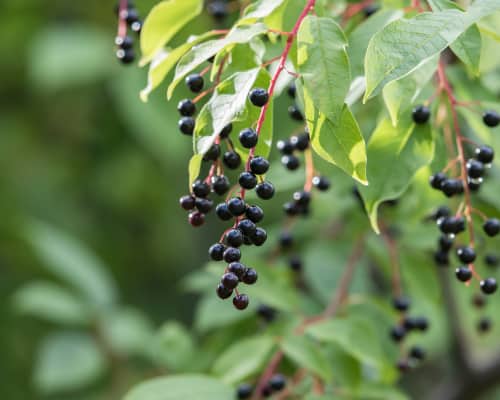
Chokecherry in Nebraska
These small, edible, and tart berries are a favorite of many foragers. Because they are so tart, a lot of people don’t like eating them on their own and instead prefer to use them to make chokecherry jelly, jams or syrups.
There are a few things to know about enjoying chokecherry.
First, never eat the seeds. Like with traditional cherries, apricots, or plums, the seeds are toxic. You may have swallowed some of these in the past and been fine, and therefore think that the seeds are actually okay. In truth, the seeds are toxic when they crack open. So you may swallow some seeds and be fine, but then one cracks open and then you’re sick. The chemicals inside these seeds are converted into cyanide when they’re in the stomach. This can be very dangerous, especially in large amounts. So, whether eating chokecherry raw or cooked, always deseed them. You will want to remove the seeds before giving them to children.
The next thing to know is that you want to pick chokecherry when it’s very ripe. If it’s a bright shiny red, don’t eat it yet. When they’re not fully ripe berries, chokecherry is especially bitter. You want to pick chokecherry later in the season when the berries are so dark they are nearly black.
If you’re going to eat them on their own, consider putting a little salt on them. Many people enjoy them better this way.
They may still not be your thing though, which is fine. You may eat them mixed in with sweeter berries, or turn them into a jam where you can mix them with sugar and other flavors.
Wild chokecherries typically grow on small trees or shrubs, and can often be found along the edges of fields, in hedgerows, or in other areas with ample sunlight. Chokecherries have small, oval-shaped leaves that have serrated edges.
When harvesting wild chokecherries, it’s important to take only the ripe berries and leave the unripe ones to mature. It’s also important to avoid harvesting from areas that may have been sprayed with pesticides or other chemicals.
You can find chokecherry in Nebraska from the middle of July to the middle of August.
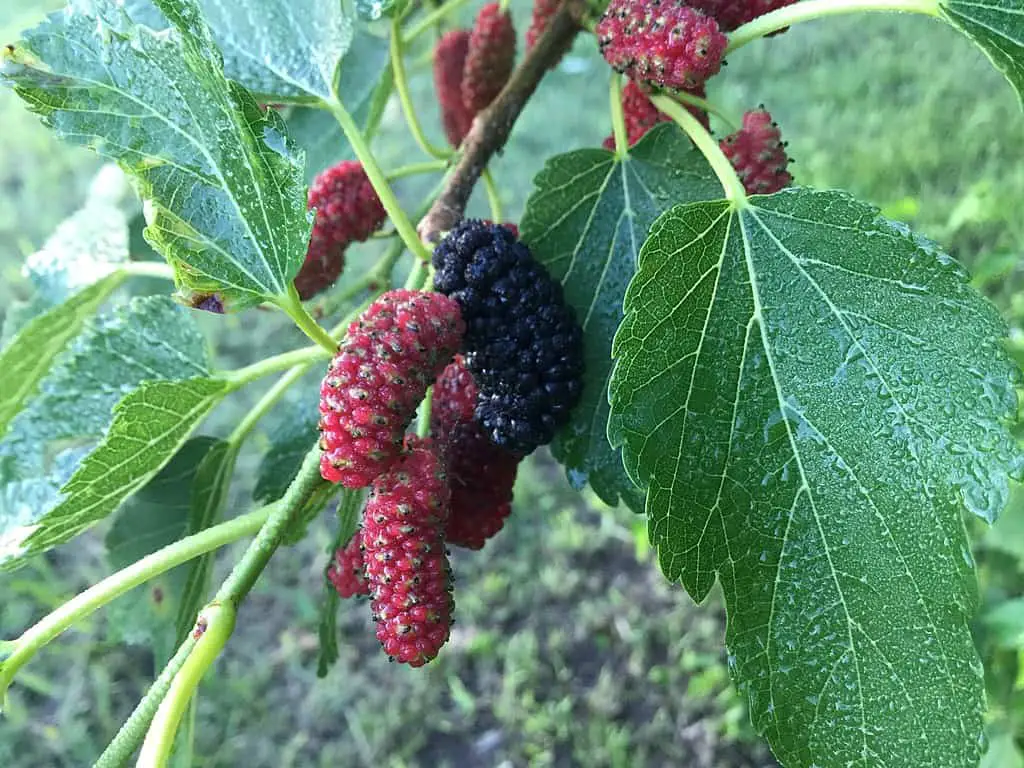
Mulberries in Nebraska
Mulberry berries are a delicious and nutritious fruit that can be found growing wild in Nebraska. These small, dark-colored berries are packed with antioxidants, vitamin C, iron and are a great source of fiber. Studies have linked these berries with health benefits like lowering cholesterol, lowering blood sugar, and lowering cancer risk. They’re a popular choice for foragers and berry enthusiasts.
To find mulberry berries in Nebraska, look for a small tree or medium-sized tree. They can often be found in parks or along roadsides. They like other areas with ample sunlight. Mulberry trees are identified by their broad, heart-shaped leaves and their reddish-brown bark.
When harvesting mulberry berries, it’s important to be aware of any potential hazards, such as thorns or poison ivy, that may be present in the area. Mulberry berries can be eaten fresh or used in a variety of recipes, including pies, jams, and muffins.
It’s best to look for them in the late spring or early summer. In Nebraska, keep a keen eye out from the middle of June to the middle of July.
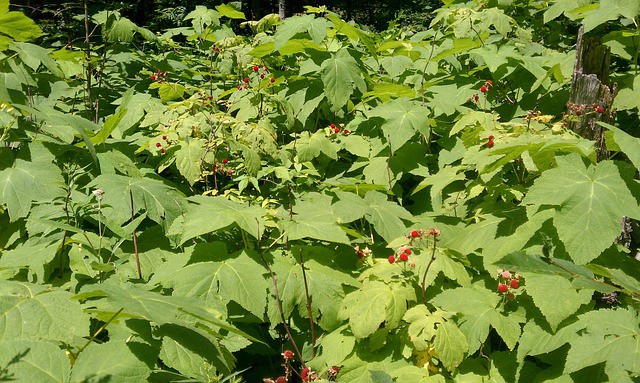
Wild Raspberries
Yes, you can find red raspberries growing wild in Nebraska. They typically grow in dense thickets in areas with plenty of sunlight and can often be found along the edges of fields, in hedgerows, or in other areas with ample sunlight.
Wild raspberries are identified by their small, delicate, red berries that grow in clusters. With a little patience and a keen eye, you can easily find and enjoy the sweet and tangy taste of fresh, wild raspberries.
The window for finding wild raspberries in Nebraska is fairly brief. You’ll want to start looking in late June. The season lasts through the middle of July.
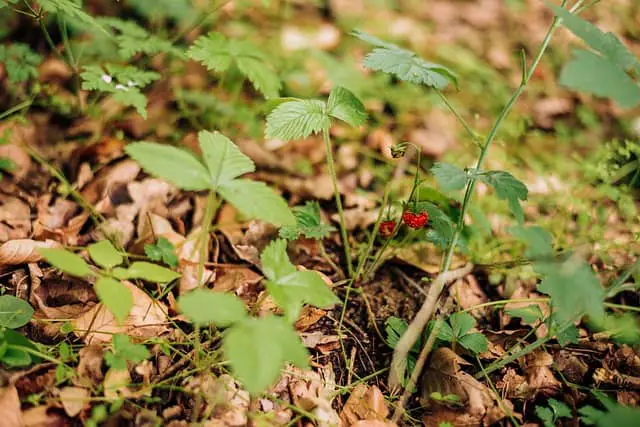
Wild Strawberries
The first thing to know about finding wild strawberries in Nebraska is that the bright red fruits are generally smaller than the ones you’re familiar with in the store. They’re sweet, they’re delicious, but they’re often about the size of your fingernail. Don’t expect to find huge berries growing wild in the woods.
They typically grow in sunny, open areas and can often be found along the edges of fields or in other areas with plenty of sunlight. Wild strawberries are easily identified by their small size and bright red color.
Start looking for wild strawberry patches in the middle of June through the middle of July.
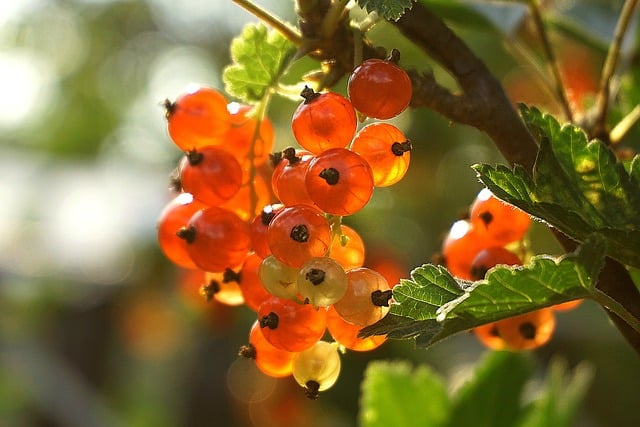

Currants in Nebraska
Wild currants are edible fruit with many varieties found in different parts of Nebraska. These small, tart berries are a favorite of many foragers and can be used in a variety of ways, including making jams and sauces.
Some of the currants you may find in Nebraska are the wax currant (Ribes cereum), golden currant (Ribes odoratum), and American black currant (Ribes americanum).
The wax currant earned its common name from its leaves. When they’re older and you rub them, you’ll come away with a waxy feeling on your fingers. They have a citrus scent to them. You’ll tend to find them growing in rocky, gravelly areas.
The golden currant also goes by the common name buffalo currant and clove currant, which has yellow flowers. They smell like clove, hence the name. They can often be found growing on woodland edges. You’ll find them in western Nebraska.
The American black currant has golden dots on the underside of its leaves. You’ll find this one growing across all of Nebraska.
You can find these various types of currants growing wild from around the middle of July to the middle of August.
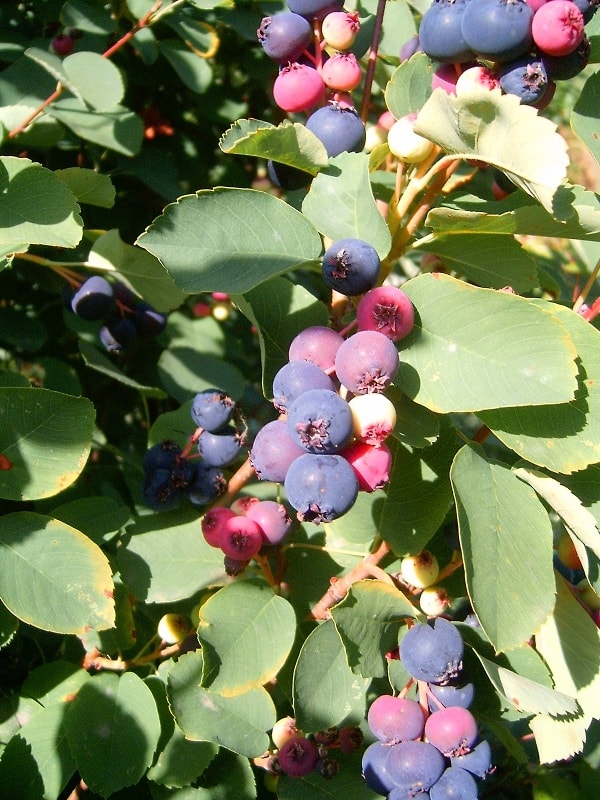
Serviceberry in Nebraska
The serviceberry is also called juneberry or sometimes Saskatoon serviceberry. They are edible berries that are sweet and delicious. They are also highly nutritious with lots of antioxidants and vitamin C. People eat them freshly picked, mixed in with other more tart berries, or cooked into pies, jams, or other desserts.
Sometimes people think serviceberries are ripe when they’re pink. You want to wait until they are dark purple or dark blue. The plant has green leaves and a stem that is deep brown with a reddish tint to it.
Nebraska hikers will find serviceberry growing in the southeast parts of the state.
The best time to find serviceberries getting ripe is in June and July.
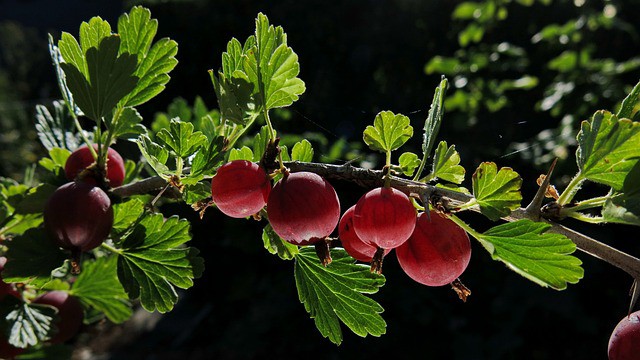
Gooseberries in Nebraska
In Nebraska, there a few different types of edible gooseberries around. They could be easy to confuse with currants. One of the ways to tell the difference is that most of the gooseberry varieties will have prickly little hairs or spikes growing on the stems.
Missouri gooseberry is the most common kind of gooseberry hikers in Nebraska are going to find. They grow in the woods if the trees are open and in the grasslands. They’re in the eastern part of Nebraska. Their latin name is Ribes missourience.
While they are less common, you may also find hairy-stem gooseberry (Ribes hirtellum) or northern gooseberry (Ribes oxyacanthoides). They grow in northwestern Nebraska. But again, they are less common.
You’ll find the best berries to be ripe from the middle of July through August.
Finding Wild Berries in Nebraska
Most berries do best in moist climates, which is why people often think of the Pacific Northwest when they think of foraging for native species of delicious fruits. However, Native Americans have been eating from native plant varieties here in Nebraska for a very long time.
One of the best things about finding edible berries out in the woods on your own is the satisfaction of learning to identify them, learning to prepare them, and eating something on your own. There is a self-sufficiency to this that is deeply powerful. There’s also a greater connection to nature that many foragers appreciate.
Of course, you’ll want to take precautions. If you’re just getting started eating wild fruits, it may be a good practice to start identifying them for a while before you start eating them. When you believe you have correctly identified a berry, try eating one first and eating an hour before eating larger quantities. If you feel abdominal pain, don’t eat anymore. If you experience symptoms after eating wild fruit, always contact poison control and a medical professional.
With that warning out of the way, hopefully, you’ll start identifying berries in Nebraska and crossing off your foraging bucket list. Explore the public lands in this state, go on long hikes, and bring treats back to your kitchen that you can possibly keep around frozen in plastic bags to have something sweet available during those cold winter months.
Recent Posts
The only venomous snakes in Washington State are Northern Pacific Rattlesnakes. The Northern Pacific Rattlesnake (Crotalus oreganus oreganus) is a sub-species of the Western Rattlesnake. Anyone...
Skunks are not classified as true hibernators. But they go into a state of torpor when the weather gets cold. Skunks are light sleep hibernators, along with opossums, bears, and raccoons. ...
